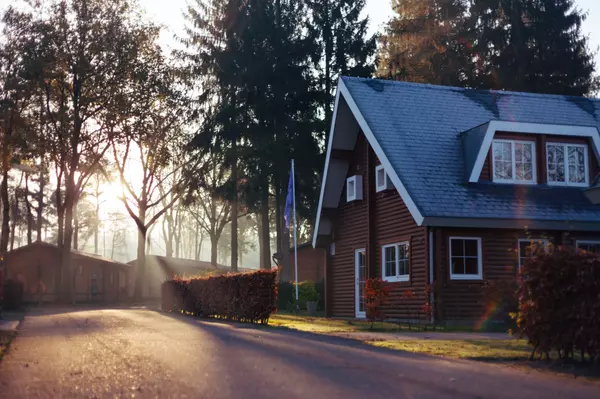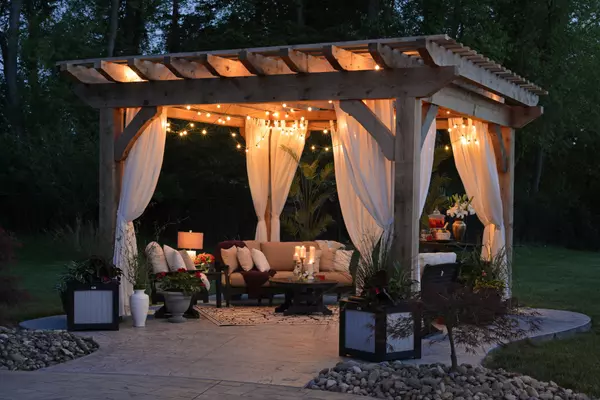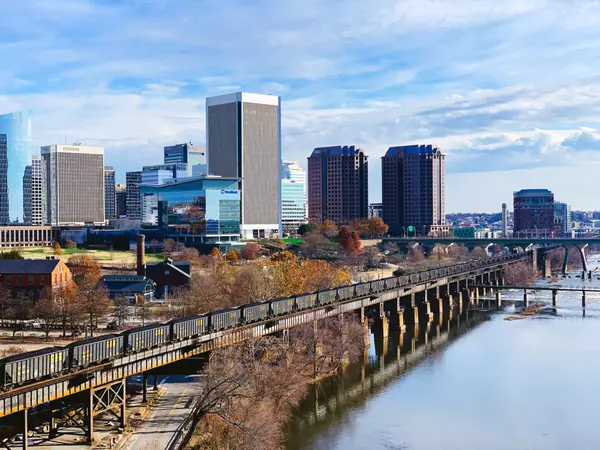
Why are so many people relocating to Virginia?
ntic. The city of Virginia Beach has 38 miles of coastline offering pristine beaches and tons of outdoor activities. Virginia is also home to four major rivers that flow into the Chesapeake Bay. These, from North to South, are the Potomac-Shenandoah River system, the Rappahannock River, the York River, and the James River. Between these four rivers and dozens of other smaller rivers, not to mention, over 217 miles of the Blue Ridge Mountains run through Virginia. And, with all this beauty comes an array of outdoor activities. From mountain biking, paddleboarding, canoeing, kayaking, and surfing, to camping you’ll never get bored hunting for outdoor activities. If you don't have your gear, there are plenty of outdoor gear rental places to get what you need. Source: getbellhops.com Residents can hike the Appalachian Trail, Blue Ridge Mountains, explore Shenandoah National Park, tour estates, and beautiful gardens, dine and enjoy some spirits at more than 200 breweries and cideries and more than 300 wineries. Overall, Virginia’s variety of family activities and scenery provides something for everybody. History Abounds If you love history the state that is nicknamed Old Dominion, was the first permanent settlement of the British. It was one of the original 13 colonies in the formation of America and four of the first five presidents and founding fathers were born and raised in Virginia: George Washington, Thomas Jefferson, James Madison, and James Monroe. As the largest and most populated colony at the time, the state played a vital role in the American Revolution. The famous speech “Give me liberty or give me death!” was delivered by Patrick Henry in Richmond in the year 1775. Considered the location of the end of the American Revolution, the British surrendered in Yorktown, Virginia in 1781 when Americans won their independence. During the Civil War, Richmond became the capital of the confederacy. Due to its close distance to Washington D.C. and abundance of manufacturers and mines, most of the battles of the war were fought in Virginia. History like this has been key in making Virginia what it is currently. If you want to see this colonial history up close and personal visit Colonial Williamsburg. The historic district and interactive living history museum show daily colonial times. Walk the streets or take a carriage ride and find yourself in the colonial era. There are also shops and workshops, fife, and drum demonstrations, or dine at an 18th-century tavern. The Cost of Living is High Sounds fun, informative and a nice place to call home, right? Be aware even though lots of folks are relocating to Virginia, it is more expensive than other states to live in. The cost of living is above the national average and the taxes are high as well. On a list of the top 10 states for income tax, Virginia was ranked seventh. But don’t despair it is possible to find an affordable place to live if it is in a rural area. For example, the city of Covington was listed as number one for affordability. But if you are wanting a metropolitan area, choose on living in Richmond making about $83,000 a year. It is the state capital, but Richmond and the cheapest metropolitan area in Virginia. Education in Virginia According to the Virginia Economic Development Partnership, Virginia is the 6th most educated state in the country. 38% of the state's population growth has a bachelor’s degree or higher. As far as the Southern States go, this is the top in the region. The state is full of excellent colleges and universities, including top-rated public and private schools, and why many have opted to move here. By enrollment, George Mason University in Fairfax is the largest public research university in the state, with a student population of over 39,000. Virginia Tech, Virginia Commonwealth, the University of Virginia, and Old Dominion University are also well-known schools in the state with more than 24,000 students each. Liberty University in Lynchburg is not only the largest private school in Virginia but also the largest university in the state with an enrollment of more than 100,000. And of course, don't forget, West Virginia University is also close by if you have a child thinking about attending there. While Virginia is a great state to seek higher education, it also boasts strong secondary and primary education systems. Some of the state’s highest performing school districts are Falls Church, Arlington, West Point, and Yorktown. From kindergarten through elementary school and high school, the education provided in Virginia is top-notch. For parents with young children, consider Arlington. Jamestown Elementary School (public) and Arlington Traditional (magnet) are both among the top-rated public schools in the state. Source: unitedvanlines.com Virginia’s Weather Virginia as mentioned has all four seasons: tough winters, hot summers, and beautiful fall and spring seasons. Summer, while hot, humid, and rainy, is the tourist season. The fall can still be bombarded with tourists because of the beautiful leaves changing and many festivals. Winters are cold, snowy, and not the best time to consider moving, Virginia is known for being exceptionally polite. Unlike larger cities like Boston and New York, folks in Virginia say hello when they pass you on the streets, they open doors for you, and they aren’t afraid to give you a friendly smile. While this cultural change can take some getting used to, especially if you’re moving from a bigger city, most who experience it, fall in love with it. Not all Unicorns and Rainbows Many folks say that Northern Virginia has some of the worst traffic in the nation. With it hugging D.C., the area can become packed like sardines, quickly. If you’re moving from New York, Chicago, or Los Angeles… this might not be a concern for you. But, if you’re used to being able to jump in a car and get anywhere in less than five minutes, you might want to think twice about moving to Virginia. But whatever you decide after reading all this information Virginia could be the place for you and your family to call home sweet home. Do look for the best Realtor to help you find a residence for you and your family that fits your budget, needs, and more in the Old Dominion state.
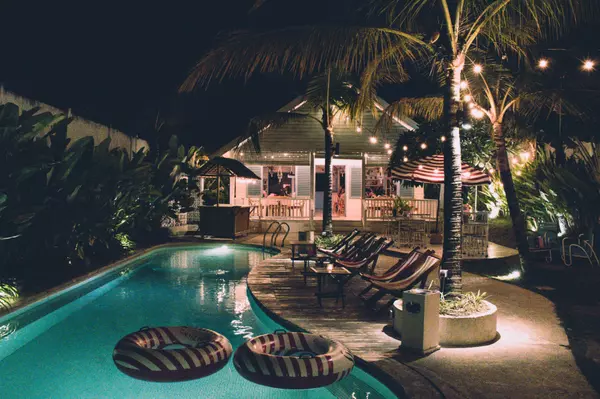
Creating a great outdoor entertainment area this season
What was once only viewed in the most expensive American homes, the “Outdoor Room” — as it’s called in the home and design sectors — has now become mainstream offering all homeowners great outdoor entertaining options. Outdoor entertaining in such a space whether the goal is to create a beach house feel or just a comfortable and casual place to interact in the backyard is easier than ever. Here are some ideas and design tips to get you on your way to the best outdoor entertainment space on the block in Virginia or wherever you call home. Outdoor Kitchens Some of the more interesting attractions homeowners are adding for outdoor entertaining is an outdoor kitchen complete with many built-ins such as high-efficiency barbecue cooktops, Wok side burners, Stainless Steel refrigerators, pizza ovens, speed racks for outdoor bars, fireplaces, and fire pits. It’s true, that since the COVID-19 pandemic, homeowners have been spending a lot of time and effort in making their backyards the best place for outdoor entertaining. Yes, backyards across the country are becoming much more than a deck or patio simply used for outdoor dining, barbecuing, and the like. Homeowners want a more stylish outdoor room that is an entertaining center built around the main attraction, the grill. In short, they want a wonderfully aesthetic design that equals a dream outdoor oasis to be proud of. People have been upgrading their indoor kitchens for years with professional-grade stoves, range tops, refrigerators, dishwashers, and more. And in the past decade, a growing number of homeowners have been applying that same top-of-the-line approach to their outdoor living rooms/spaces for great outdoor entertaining by installing outdoor kitchens. Getting Trendy Why the trend for more outdoor rooms and additional emphasis on luxury? As mentioned, since the COVID-19 pandemic and the many lockdowns and lock-ins that kept people at home, most have gotten used to spending more time in their humble abodes. Even though most COVID-19 pandemic mandates have been lifted, as well as social distancing practices, for the most part, people still want to stay closer to home to spend more time with their family and friends. This means making their homes and yards more flexible and creating better outdoor entertaining places to comfortably gather. The indoor "Great Room" that became popular years ago combined the kitchen, dining room, and family room into one large space where it was easy for everyone to connect. As homeowners have become more attracted to a casual lifestyle, the concept of enjoying everything in one place is carried over to their outdoors where landscaping is part of the ambiance. Again, those Stainless-Steel appliances that became the kitchen standard years ago, have also become the standard for backyard cooking, outdoor dining, and outdoor entertaining. Homeowners want their outdoor rooms to be well equipped and coordinated in design and are adding counter space, covered patios, lounge chairs, ambient lighting, edible gardens, picnic tables, refrigerators, and various other accessories to complement their outdoor entertaining areas. Other Cool Ideas This concept of ‘outdoor living,’ makes a backyard and patio an extension of the living space of your home that many homeowners are loving year-round depending on where they live. Some other ideas to add to your outdoor room beside the above could include additional seating, extra seating, and more casual seating with clean lines including sofas, loveseats, lounges, club chairs, and spring rockers all in the effort to create a cozy space. Don't forget outdoor table lamps and floor lamps, outdoor rugs, outdoor fireplaces, and many new styles, sizes, and shapes of umbrellas, cabanas, pergolas, and gazebos can all create a house beautiful appearance. Outdoor seating and other furniture trends have also become more sophisticated with clean lines or simple lines in their designs and now include outdoor weatherproof synthetic wicker, tropical/Caribbean influence styles and fabric (bamboo, banana prints), and sling-type mesh fabrics for easy maintenance. Demand is high for patio/backyard covers including table umbrellas, market umbrellas, wrought iron, resin, and fabrics all to make the best backyard living space ever. These covers provide comfort, and shelter from the elements, and make ‘outdoor living’ easier and more comfortable. How to Create Cozy Another popular design idea for backyard living is outdoor fireplaces and fire pits as these can be built as a permanent structure in the landscape plan or can be bought as a prefabricated unit and installed the next day. Prefabricated, full-size outdoor fireplaces with a hearth can be wood-burning or gas log and are super popular all over the country. Other design tips include adding a seating area around a fire area, as comfortable couches are great for entertaining or just enjoying on your own. Go bold and big and add a TV and an outdoor projector to show your creativity and cap off the area that neighbors will envy. Super Spas As for spas, and other water features, these too have become an excellent backyard item that many homeowners are adding to their yards. Since many people are stressed from long hours at the office, coming home to an outdoor spa is an attractive option like one with hydrotherapy options. These are cyclone jets designed to target pressure points throughout the body, including the balls of your feet. Such jets have been shown to reduce heartbeat and soothe sore muscles. Many doctors prescribe this for rehabilitation therapy, too. Swimming Pools One of the ultimate backyard entertainment areas and usually the focal point is the swimming pool in all its wet glory. If you’re thinking of putting in a pool this year, why go simple when you can add fountains and waterfalls that complement, or overflowing urns or cascades over stones? Also, vanishing edge pools are popular as well as uniquely shaped pools that are becoming the trend. Artificial rock pools and spas are on trend too because homeowners are staying away from pools with tile coping and want to feel like they are on vacation. The sky is the limit when thinking about installing a pool as swimming pool companies today can turn a backyard into something you would see in a resort thanks to the use of caves, waterfalls, slides, and diving rocks to accent any backyard. Rockpools can be great fun, and not only do they look beautiful, but they also provide an unlimited amount of fun by jumping off the rocks, sliding down a rockslide, and swimming under waterfall caves. High-Tech Thanks to the state-of-the-art technology all around us, outdoor appliances, including Stainless Steel, prefabricated fireplaces, bulletproof patio furniture, and large screen TVs outside are now possible. Add some ceiling fans that operate via remote for a subtle airflow to keep the space comfortable on extremely hot days, or misters to cast air-born cooling and you’re set for the day. How about a groovy palapa or thatch structure or a few Tiki torches here and there, up-lighted palms or shade trees, hidden speakers in the shrubbery ... In the end, homeowners are excited about taking the indoors, outdoors, and entertaining as often as they can in the Great Outdoors, wherever they may live.
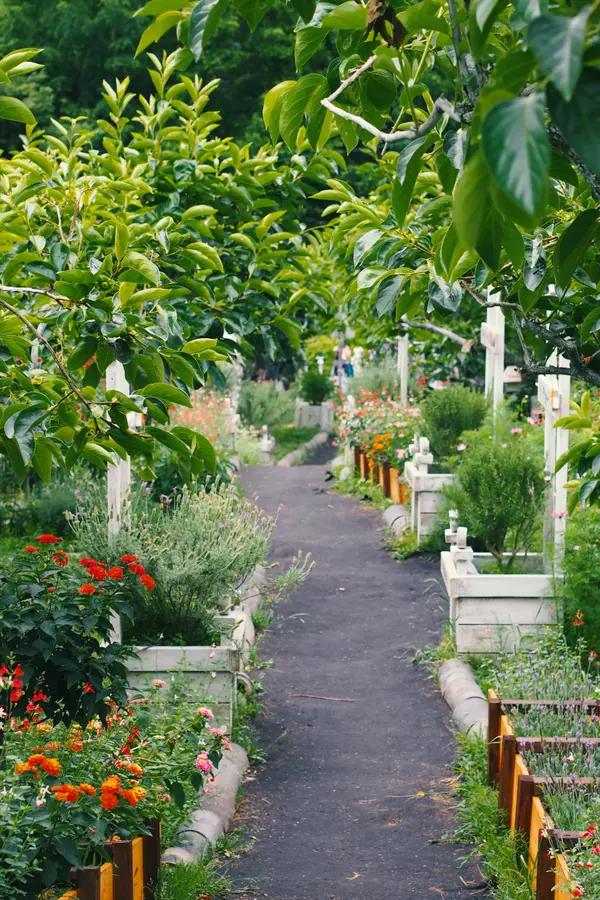
Creating the best spring garden this season
Now that it's late spring and summer is just around the corner, it’s a perfect time to start thinking about planting a garden in your outdoor space or the yard of your Virginia home. If you plant flowers in those empty flower beds, fruit trees, and shrubs you will reap the rewards of all the beauty of planting a late spring garden or late summer garden. Additionally, if you plant a garden you will enjoy months of veggies and fragrant flowers. However, if you don’t know how or where to begin, what the soil type is, type of bed, or if you want to buy a seed packet or a few, no problem as there are some easy tips and ideas to get you going on creating your late spring garden or late summer garden. Take A Couple of Days As a beginner, take a couple of days to decide if you've still got cool weather before you start choosing the vegetables and fruits you want. Be sure to check with the state’s Cooperative Extension Service or local garden center or garden centre to find out what plants grow best in your area in the cooler weather or warmer weather. For example, if you live in an area with extremely hot weather, vegetables that prefer cooler temps may have a hard time and your gardening tasks might be more involved. Here are some easy veggies to begin with for your late spring garden or late summer garden. You will surely be making daily garden visits and checking out the edible garden space as well as the type of bed once you get situated: Lettuce Green beans Radishes Tomatoes (bush variety or cherry are easiest) Zucchini Peppers Beets Carrots Chard, Spinach Garden Peas Add Fragrant Flowers While planting any or all of the above in the garden soil or garden beds try to add in a flower bed or two with fragrant flowers such as marigolds — which will keep away pests, and animals, attract pollinators and offer up some nice color. You should be able to get everything you need: organic materials, and a garden journal, a container of garden soil, plants, flowers, fruits, fruit tree, and veggies, a garden hose, garden soil, items to keep away animal scavengers, and any future buildup of insects at your local garden center. More tips for choosing spring garden vegetables and fruits for your edible garden space and garden beds: Opt for those veggies that you (and your family) like to eat. For instance, if the brood doesn't like brussels sprouts skip them and go for something else that will be fun to watch in the edible garden space and later eat. Maybe your kids like green beans, garden peas, and tomatoes, so put more effort into growing those items. Again, local garden centers should have these plants and a nice fruit tree for you to plant in the edible garden space. Be realistic about how many vegetables your family will eat. In other words, don't go crazy and overplant in your spring garden, or you’ll be spending a lot of time caring for lots of plants. Consider the availability of veggies and fruits at your grocery store; maybe you want to grow tomatillos, instead of cabbage or carrots, which are readily available. Also, certain veggies and fruits are so so much better and tastier when homegrown, so do think about adding them to your late spring garden and in your garden beds. Pick up whatever you like and those you want to see growing in your late spring garden from your local garden center. Also, any type of homegrown herbs is far less expensive than grocery store herbs, and fun to watch them grow in your yard. Be prepared to take care of these plants throughout the growing season. Going on a summer trip? Remember that tomatoes and zucchinis are growing strongest in the middle of summer. If you’re going to be gone most of the summer, ask a friend or neighbor to look after the crops and your spring garden or they will suffer. Or, if you plan to be busy this summer and not home much, think about planting cool-season crops or plant seeds such as lettuce, kale, garden peas, and root veggies during the cooler months of late spring and early fall. Plant high-quality seeds; seed packets are less expensive than individual plants, but if seeds don’t germinate, your money — and time — are wasted. If you do plant seeds be sure there is an airflow between plants in the soil or via a layer of compost. Spending a bit more for the year’s seeds will pay off in higher yields at harvest time, all this according to almanac.com Vegetable Gardening for Beginners Overall, you might be asking why create a spring garden and/or have a spring garden at all after reading about all things you’ll need to do just before even the first crop. Well, time is of the essence and now is the perfect time to start thinking about adding a garden or edible garden space at home for many reasons. Think about sketching a garden diagram first and as you go keep a garden journal to add ideas, thoughts and how things are going. It might be fun for you and the family to write down when the first harvest window occurred or simply follow the continual harvest timeframe throughout the seasons in the garden journal. How about enjoying the best vegetables and fruits you’ve ever tasted? If you’ve never had garden-fresh food, you will be surprised at how sweet and juicy everything is. There’s certainly nothing like fresh veggies, and fruits especially if you grow them — which you surely can this season. It may seem like a big job, but gardening can be an enjoyable hobby and pastime. Pick the Right Location After deciding on the plants, the next process is choosing a good location for your late spring garden and edible garden space since the wrong time can result in subpar veggies. Here are a few tips for choosing a good site: Sunny spot: Most vegetables need 6 to 8 hours of direct sunlight per day. There are a few veggies (mostly the leafy ones) that will tolerate some shade. Drains well and doesn’t stay wet: If you have poorly drained soil where water pools, plant veggies in a raised bed or raised row for improved drainage. Wet soil means wet roots, which can turn into rotted roots. If you have rocky soil, till or use a garden fork and remove the rocks, as they will interfere with root growth and make for weaker plants. Stable and not windy: Avoid places that receive strong winds that could knock over your young plants or keep pollinators from doing their job. Also, do you want to plant in a location that receives too much foot traffic or floods easily? Nutrient-rich soil: Your soil feeds your plants so before planting makes sure beds are ready. If you have thin, nutrient-poor soil, you’ll have poor, unhealthy plants. You can always get a soil sample or a soil test kit to make sure you have the right soil. You may want to add compost, a layer of mulch, or brown bark to the edible garden space as well. Do mix in plenty of organic matter and organic materials to help your plants grow, all according to almanac.com Things to Ask Before Planting Also, be sure to know where the area gets at least 6 hours of direct sunlight. Why? Without substantial sunlight, and too much direct sunlight throughout the day you might have a sad vegetable garden. If you don't have a location that receives at least six hours of direct sunlight, find a way to reduce shade in your yard or get on a list for a community garden site. Creating an overhead view and garden diagram of your garden area can be very helpful in planning a new garden space or creating a seasonal plan for an existing garden space. Consider these tips: Is there vegetation that needs to be removed before planting? Vegetables will struggle if they must compete with grass, weeds, or other plants while they grow, so make sure the vegetable garden area is free of all vegetation and any unsightly grass clippings at the time of planting. What is the soil like in my garden? Is the soil moist? Is it wet soil or poor soil? Is it fertile soil? What is its texture? (sandy soil, clay soil, loam?) What is its color? (Darker generally indicated higher fertility) Does it hold or shed water? Do things seem to like growing where I am planning my vegetable garden? Here are some easy home tests that you can use to learn about your soil: There is a variety that you can do at home to learn a ton about your soil. A soil test submitted to a lab can tell you even more. Will I need to amend my soil with compost or organic fertilizer before planting? Thinking out your garden plan as listed above, and getting an official soil test is easy and can provide much more extensive insight into the hidden qualities of the soil. Timeframe Every vegetable has its own unique needs and ideal conditions when garden planning, in general: Spring: Cool season roots and greens. Summer: Heat-loving summer veggies, + a whole lot more. Fall: Cool season roots and greens. Winter: Hardiest Winter roots and greens. Cool Season Vegetables These veggies do best when they are grown during the cooler spring and fall seasons. Many of these vegetables will bolt or become stunted when exposed to high temperatures. Most can be grown in the spring and fall while some are best suited for one season or the other: Plant For Spring Only: Snap Peas, Snow Peas, Fava Beans. Plant For Spring and Fall: Arugula*, Beets*, Broccoli, Broccoli Raab, Bok Choi, Cabbage*, Carrots*, Cauliflower, Collard Greens*, Kale*, Kohlrabi*, Lettuce, Mizuna, Mustard, Parsley*, Radishes, Spinach, Turnips. Plant For Fall Only: Brussels Sprouts, Celery*, Parsnips*, Leeks.* * = Tolerates some heat. Hot Season Vegetables These veggies do best maturing in the heat of the summer. Many (like tomatoes and peppers) need hot summer days to mature their fruits. Planting hot season vegetables too early in the year leads to unhealthy, unhappy plants while planting too late in the season doesn't offer enough time to grow them to maturity. Timing is everything with many of these summer vegetables: Basil, Bush Beans, Pole Beans, Cilantro, Corn, Cucumbers, Dill, Eggplant, Melons, Potatoes, Summer Squash, Tomatoes, Tomatillos, Winter Squash. All-Season Vegetables This shortlist includes some of the few vegetables that can be grown successfully in the height of summer and the dead of winter: Arugula, Beets, Carrots, Chard, Collard Greens, Kale, Parsley, these tips are from portlandediblegardens.com Now, Get Busy Once you’ve figured out your garden plan, picked out the exact area for your garden and all the plants and veggies you want to incorporate into the edible garden, it’s time to grab your gardening gloves, garden tools, and soaker hose, and get busy. Before you know it you will have your first harvest and you will be enjoying it with your family for your next meal!
Categories
Recent Posts
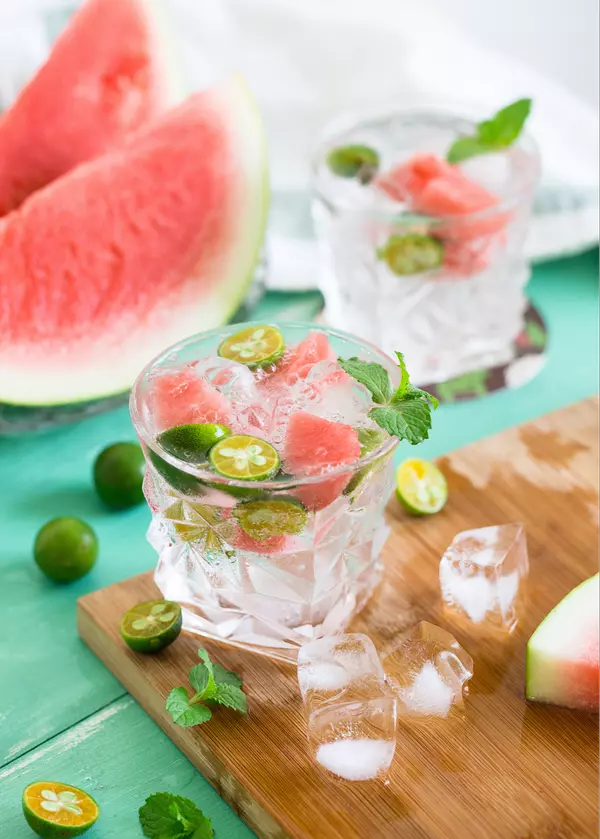

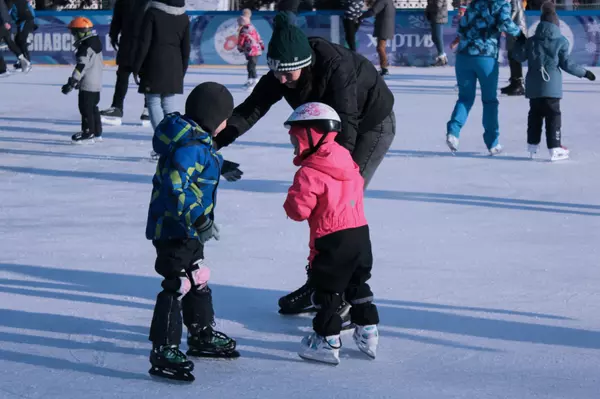



![Do You Know How Much Equity You Have in Your Home? [INFOGRAPHIC]](https://img.chime.me/image/fs/chimeblog/20220408/16/w600_original_8b6b4453-e221-4b2d-8cf4-7c58ce4e52dc-png.webp)
